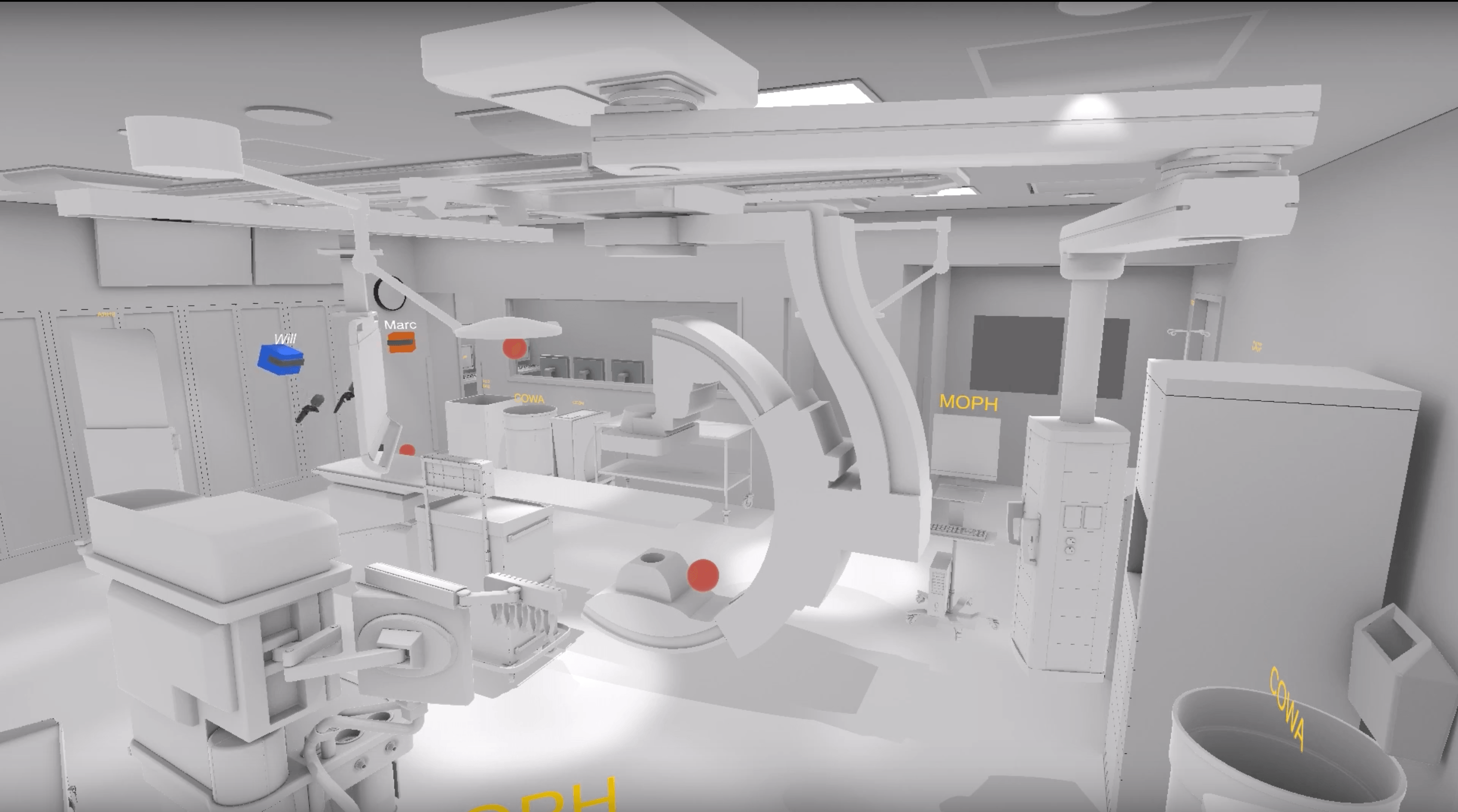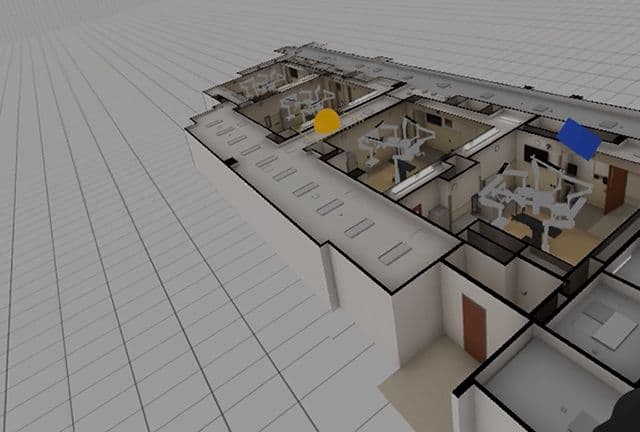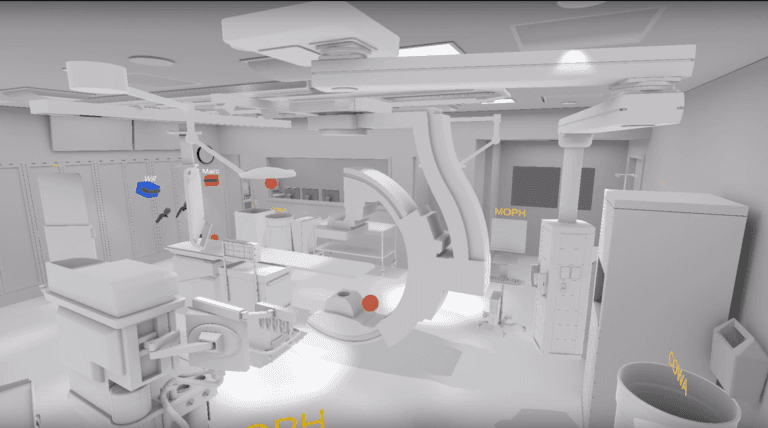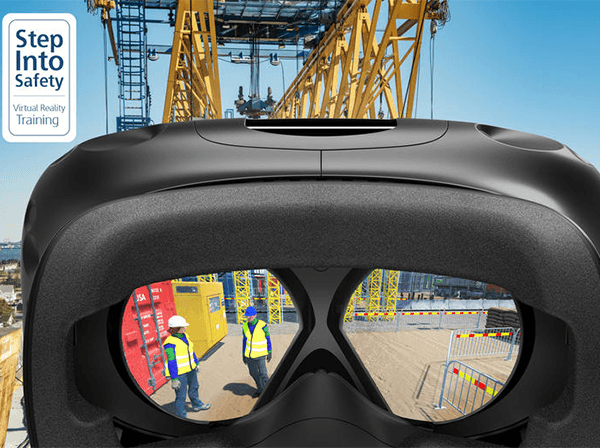
Как уменьшить затраты и риски архитектурного проектирования и строительства медицинских проектов? Компания Mortenson нашла для себя способ решения проблем. Благодаря моделированию больничных и операционных помещений в трехмерном пространстве клиенты компании могут визуализировать и взаимодействовать с важнейшим медицинским оборудованием, рабочими зонами и технологиями, вырабатывая оптимальную планировку и повышая эргономичность помещений. Это позволяет существенно улучшить заботу о пациентах, повысить эффективность работы персонала и снизить затраты.
Интерактивные VR-технологии делают больницы Kaiser Permanente и других учреждений удобнее
Помогите клиентам визуализировать, проверять и оценивать новые дизайн-проекты
VR: HTC Vive, Oculus Rift, Oculus Go, HoloLens, панорамное видео
4
Сиэтл и Миннеаполис, США

Миннеаполис, штат Миннесота. Именно здесь основана Mortenson, одна из 20 лучших компаний в области строительства, проектирования и энергоснабжения. Это частная компания с 5 000 сотрудников, офисами по всей стране и 3,8 млрд долларов годового оборота. Услуги Mortenson в области коммерческого строительства, экологического строительства, виртуального проектирования и строительства (VDC), а также обеспечения безопасности строительства пользуются большим спросом на рынке.
Много лет назад Mortenson разглядела ценность интеграции технологий визуализации в структуру услуг по проектированию и обслуживанию клиентов, в результате чего была сформировано подразделение Virtual Insights. С тех пор сотрудники подразделения стали экспертами по использованию Unity в разработке интерактивного VR-контента и панорамного видео, включая средства для анализа проекта и контент для рекламных и маркетинговых кампаний для самых разных клиентов.
Их продуктом VR hospital пользовались медицинский центр Вашингтонского университета и Kaiser Permanente.
Результаты
Several years back, Seattle-based Will Adams and Marc Kinsman, Emerging Technologies Developers at Mortenson, saw the value of VR and 360 video for client projects. The first Oculus headset was just out and Adams got in on the ground floor knowing that Unity supported the platform.
“I was working on a design project for the Minnesota Vikings’ stadium. Even though my background is mostly in architecture and design (and some rendering), I was able to convince our project team to explore the idea of simulating the new space with a 3D rendering engine. At the time, I had little experience doing that but I just knew that it would look cool and be easy to output to VR.” Adams’ colleague, Marc Kinsman, was also on board “because Unity has a big supportive community, which meant it would be easy to learn.”
As Adams, Kinsman and colleagues on the Virtual Insights team got up to speed on Unity, their first virtual reality (VR) projects covered the basics of the new 3D space but not much more. “When we started, we were mainly focused on simple virtual projects that clients could walk around in, but over the past few years, we’ve realized how important it is to build interaction into these environments for user engagement.”
When the Virtual Insights team begins a VR project, they use many architecture assets and other resources, which they download from the Asset Store as needed and they also pull in a lot of models from other software such as 3ds Max, SketchUp, and Rhino. Internally, they collaborate a lot, so they are all networked in Unity, which speeds up development and problem-solving, but also means that their customers throughout the U.S. and in Europe can collaborate in real-time in these custom VR spaces.
Due to the wide-ranging client deliverables, the team favors a number of Unity features for their projects, such as the C# API. “We can do pretty much anything we want with the API. It gives us confidence when we’re doing proposals because even if the customer wants something we’ve never done before, we know the API will help us deliver it,” says Adams.
As their projects near the finish line, Kinsman says they like how effortless it is to output to 20-plus platforms. “We’ll jump between Oculus Rift and Oculus Go, the HTC Vive and HoloLens – and we’ve done some stuff for mobile devices too – so using Unity as the base allows us to ‘right fit’ the hardware for the project, and that’s been quite beneficial for us. From the same development platform, we can target whatever’s needed for the project. We don’t have to learn anything new and we can accommodate myriad client hardware and platform requirements.”
When they start a new project, the team typically upgrades to a new Unity version (they’re currently on Unity 2017.3). And as part of their ongoing R&D, they regularly install the latest versions to familiarize themselves with new features they want to try out, such as the Scriptable Render Pipeline (SRP). They’ll be migrating to Unity 2018 soon.

Doing around 20 Unity-based projects a year has given the team a lot of VR and 360 video experience for many top-tier clients, including Kaiser Permanente, the third-largest non-profit hospital organization in the U.S.
“Generally, within the medical arena, clients ask us for help with one major use case: to build a collaborative virtual mockup in 3D space,” says Adams. “Hospital project managers regularly tell us how difficult it is for surgical teams to understand how a procedure room will work for them before it gets built. If the PM can’t get the surgical team to engage and buy in on the project, the hospital inevitably needs to remodel right away because it’s not working for the team.”
For example, Kaiser Permanente was designing a new interventional radiology room and wanted to be sure that it would function smoothly for their medical team. Mortenson built the entire room virtually, according to specifications, so that everyone on the team could enter the space and interact with it in order to help finalize the design of a room they’ll be collaborating in for years. To that end, all the specified equipment was faithfully represented in 3D so the surgical team could reach out and manipulate the light booms, tables, and everything else that they typically interact with. Watch the Kaiser radiology room video to see it in action.
On another project, when Mortenson customers are designing or building a new treatment center or operating room, the client stakeholders – including project managers, doctors, nurses and technical personnel – typically want to interact with the different elements and make decisions about room dimensions, ergonomics, aesthetics, functional systems, and workflow efficiency very early in the project. “It gives them a great opportunity to spot, discuss and correct any problems,” says Kinsman. Watch how Mortenson created a collaborative work environment for the hospital wing of the University of Washington Medical Center.
С точки зрения анализа дизайна проектов для здравоохранения, подразделение Virtual Insights обеспечило компании Mortenson существенное преимущество. Благодаря интерактивным VR-средам клиенты смогли существенно снизить затраты и избежать серьезных недостатков еще до начала бетонных работ, возведения стен или заказа материалов, и все без необходимости тратить время и деньги на физическую модель.
Например, Боб Диллон, руководитель капитальных проектов медицинского центра Вашингтонского университета заявил: «Все уже как будто готово , но можно в любой момент вернуться к принятому решению, проанализировать его влияние на другие элементы проекта». При этом Кинсман добавляет: «Наши клиенты всегда предпочитают виртуальную модель реальной, потому что это дешевле и дает больше информации».
Проект Kaiser тоже был успешным для Mortenson в этом отношении. «Благодаря интерактивной и иммерсивной виртуальной среде, которую мы создали в Unity, разработчикам проекта удалось вовремя устранить конструктивные недостатки, улучшив продуктивность и эффективность рабочих процессов, и тем самым заинтересовать и привлечь к работе медицинских сотрудников. Кроме того, это позволило Kaiser избежать лишних затрат и выполнить все работы согласно графику, не тратя время и ресурсы на физическое моделирование», — заключает Адамс.
И наконец, неудивительно, что благодаря гибкости, поддержке огромного числа платформ и обширной экосистеме, например, дружелюбному сообществу и магазину Asset Store, Unity быстро стала рабочей платформой Mortenson в разработке и улучшении проектов совместно с клиентами из медицинской отрасли.


В рамках сотрудничества со шведской компанией Skanska, пятой по величине строительной компанией в мире, креативное агентство в области VR и AR OutHere разработало высокореалистичные сценарии в виртуальной реальности для инструктажа Skanska по технике безопасности.

Mortenson, одна из крупнейших строительных компаний в США, дала возможность своим клиентам разрабатывать, прорабатывать и анализировать дизайн трехмерных пространств. Узнайте, как они сделали свою команду сильнее и существенно сэкономили затраты.